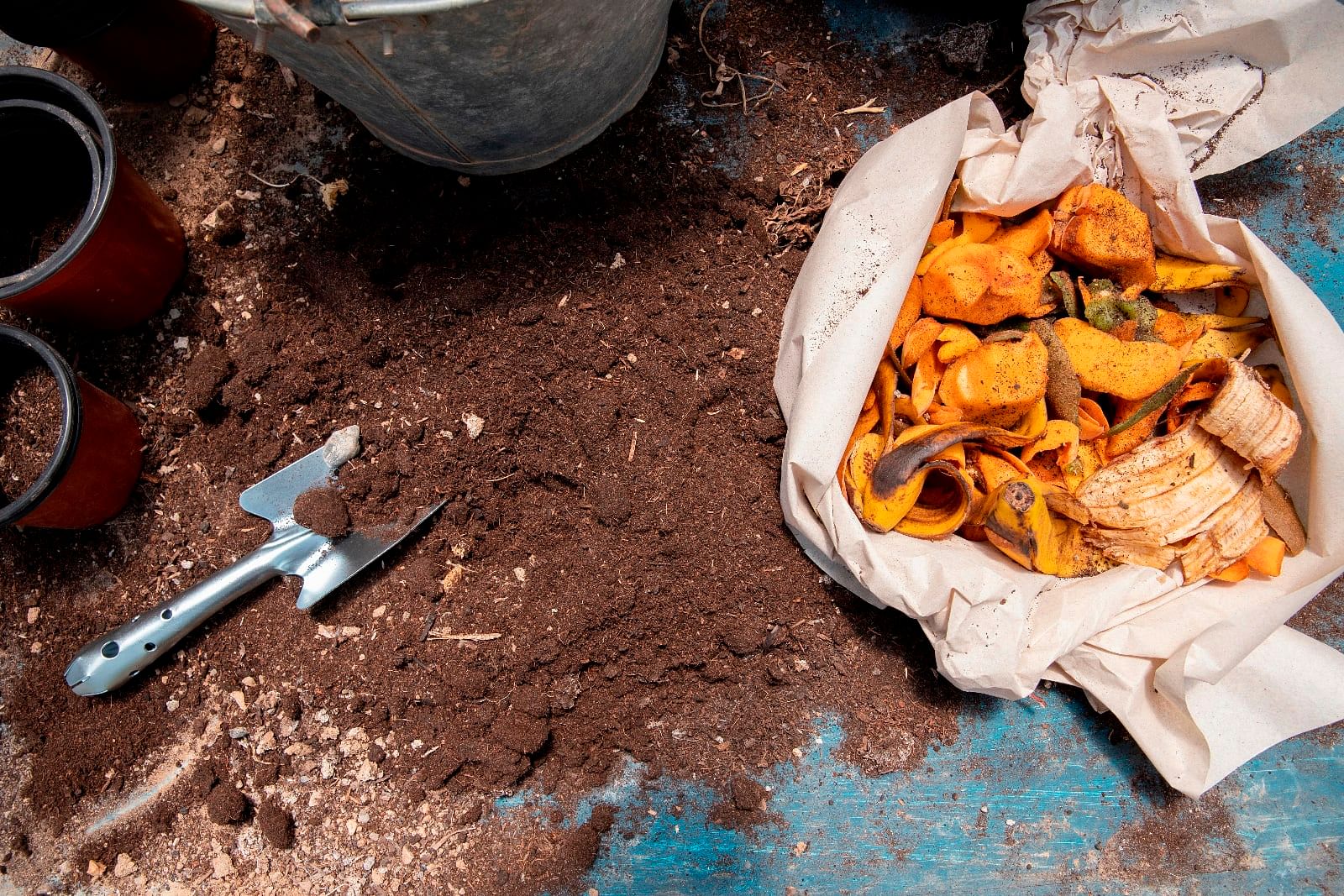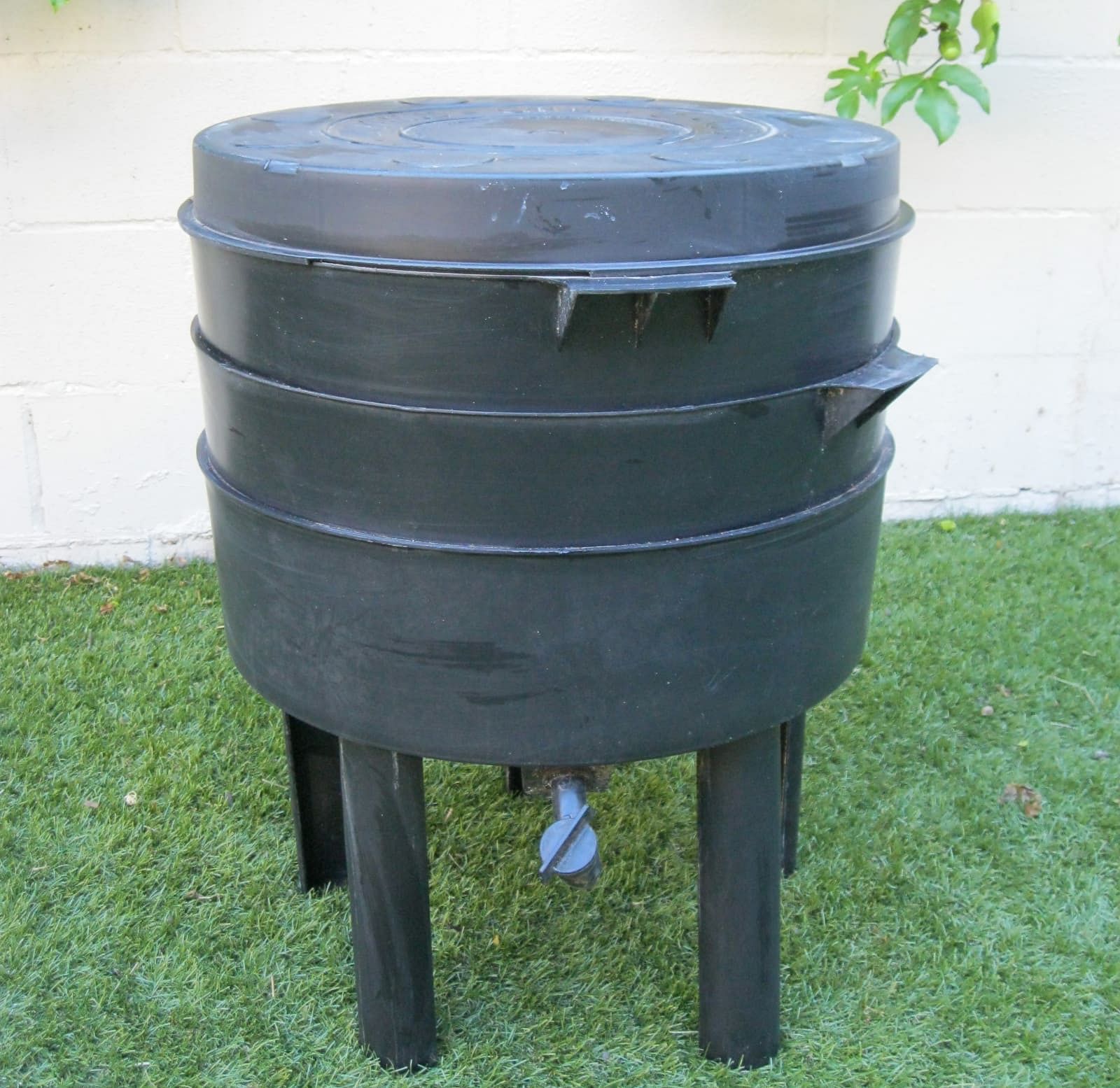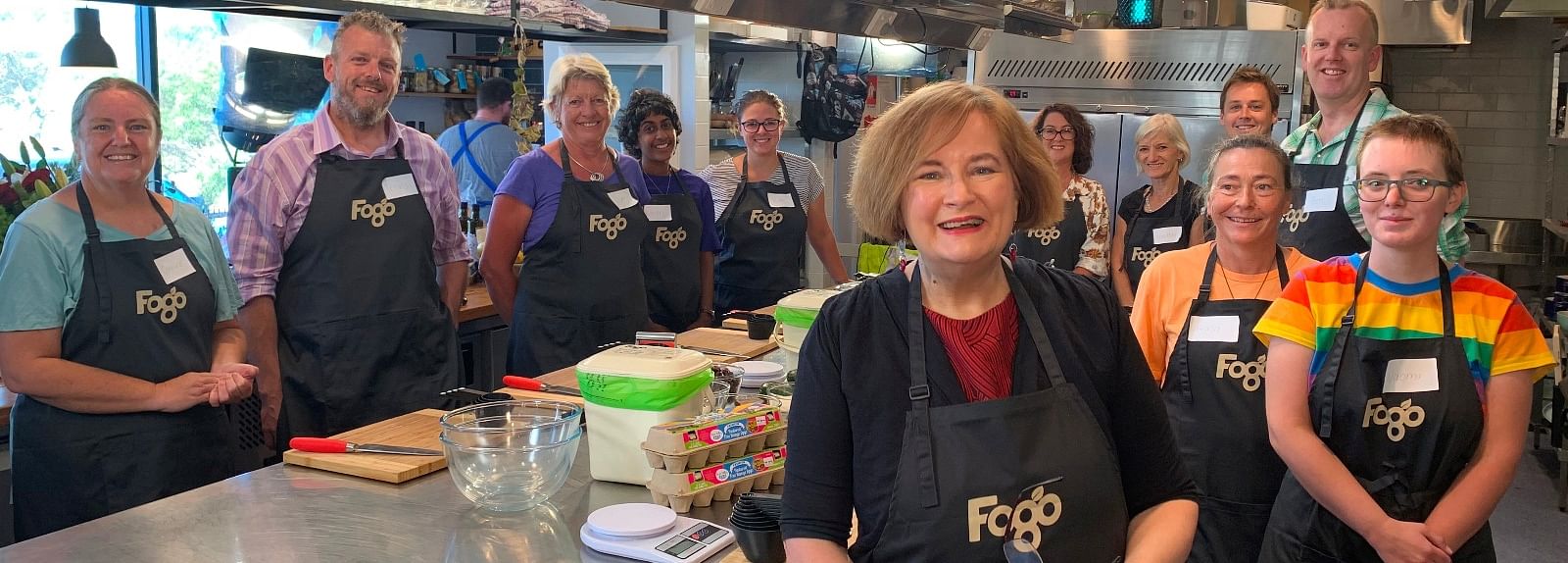Reducing Waste at Home
Step by Step guide on home composting.
![]()
Using the FOGO collection service to divert food waste from landfill is a good outcome – but have you thought about extending the benefits of composting by making your own productive soil at home?
Home composting is a year-round activity that is easy, fast and convenient and allows you to turn food scraps into valuable nutrient-rich compost. Pretty impressive when you realise you have the power within your home to turn what is essentially ‘dead’ matter into something that will give further life to your garden.
The beauty with home composting is that your food scraps travel only a few metres from the kitchen to your backyard.
You can also save money by turning your food scraps into compost within your home, as you have the means to:
- improve the soil quality in your garden (and reduce the need to buy fertilisers)
- suppress plant diseases and pests (eliminating the need to buy chemical pesticides and manures)
- helping your soil to retain moisture (reducing the need for watering)

Organic matter will eventually break down anywhere, but a well-considered composting system can achieve good results quickly. Here are the key steps to get started:
Space will determine the type of receptacle you install in your garden. In all instances choose a shady spot to prevent the composting matter from drying out, and ensure the base has direct contact with well-draining soil.
When space is constrained…

Note: 1m2 is the recommended minimum size for a compost bin as anything smaller has difficulty maintaining heat and moisture.
When more space is available…

(Photo attribution – Practically Functional)
Maintain a balance of inputs to your compost bin. Build the pile using alternate layers about 5cm deep of dried leaves and shredded twigs (carbon), food scraps (nitrogen), dampen with water (moisture) and turn it at least once a month with a garden fork (aeration).
In addition to your food scraps, vegetable oil, plant and lawn clippings, coffee grounds, shredded scrap paper and non-glossy newspaper, used potting mix, crushed eggshells and flowers can all be added. Note the size of your scraps and inputs will be critical to how long it takes to decompose.
Avoid meat, wheat and dairy in your compost because these are more likely to attract vermin. Pet droppings, diseased and poisonous plants, fireplace ash/charcoal, and yard waste treated with chemicals can also sabotage your composting efforts.
An option for dealing with pet droppings could be a pet waste compost kit of which there a few options on the market including EnsoPet and Tumbleweed.
Check that your compost is ready by ensuring its colour is dark and rich, the texture crumbly and smooth, and finally it smells earthy and woody. The process can take between 3 – 6months from start to finish depending on the size of your bin.
For quicker compost: turn the compost weekly, add a handful of poultry manure every fortnight, and include a handful of lime once a month to reduce acidity—the worms will love you for this one!
Congratulations! You have turned your rubbish into a precious garden commodity.

Alternatives to Composting
If space in your garden is limited, an alternative to bin composting is to feed your food scraps to a worm farm.
There are plenty of online resources to help you set up your first farm - including the type of worms to buy, how to construct a bin (if you decide not to buy a pre-fab setup) and how to maintain the right environment.
The key here is to avoid citrus, spicy food, garlic, onions, meat, dairy and processed foods such as bread and pasta.
Here are a couple of suggested resources to get you started - Sustainable Gardening Australia or Worm Farm Guru
If you live in an apartment the Bokashi Bin Bucket for your counter top might be more suitable, or you may find a community garden near you that will gladly accept your organic waste.
Apps such as ShareWaste help you to find someone in your neighbourhood who is willing to accept extra scraps for their worms or animals.

[Picture of worm farm receptacle]
To learn more:
- Visit Compostable Kate via her Instagram
- ABC Everyday: Composting really can be simple. This is how to make a start
- The Diggers Club: How to make compost
Keep an eye out for workshops run by:
- South East Producers
- The Crossing Land Education Trust
- Eat Dirt Permaculture at Moodji Farm
- SAGE Project
- Brogo Permaculture Gardens
- Ceres School of Nature and Climate - Online Courses
- Sustainable Gardening Australia – Online Courses
Reducing food waste at home
Cooking with Leftovers and Storing Stuff Right with Jackie French - recipes and videos.

Australian author, ecologist, historian, dyslexic and honorary wombat Jackie French AM rarely uses a recipe but adapts what she has in the garden or leftover from the day before, plus what’s in the cupboard that needs using up.
The best way to save food is to learn to cook, so you are not bound by recipes but get ideas from them which you can adapt to what you have.
Jackie generously shared some of her favourite cooking with leftovers ideas as part of Bega Valley Shire Council’s Food Organics Garden Organics (FOGO) bin collection service - it’s not just about choosing the right bin, it’s about changing the way we think about waste.
Simple TIPS
to reduce food waste
- Plan your weekly menu and take a shopping list (with quantities) to the supermarket
- Cook with leftovers
- Store food correctly so it lasts longer
- Take advantage of your local community garden






